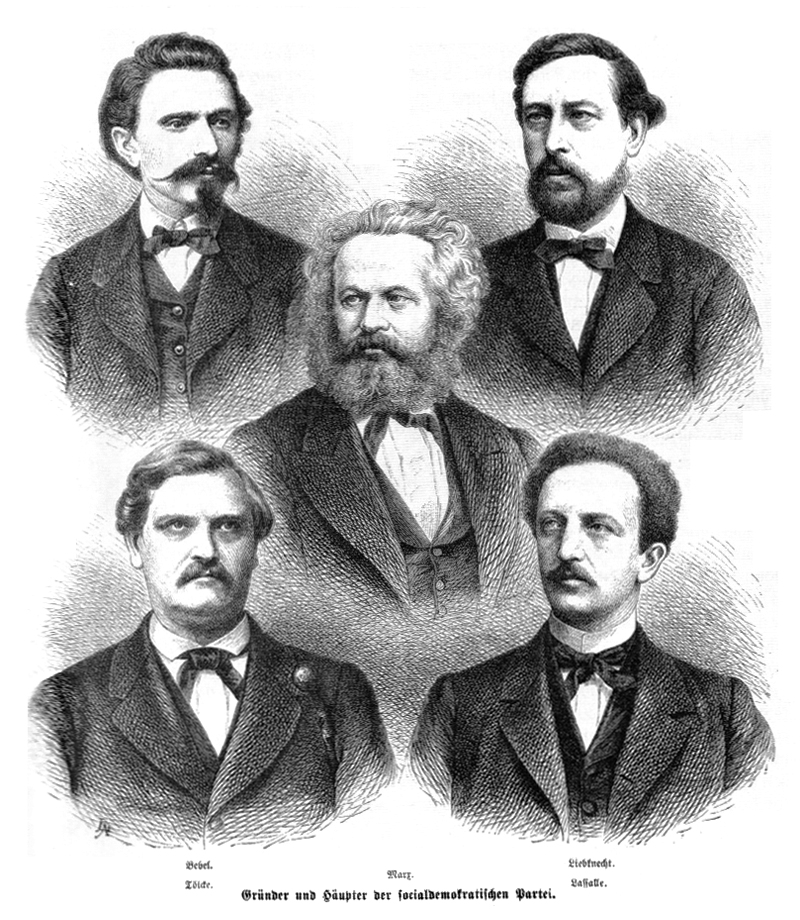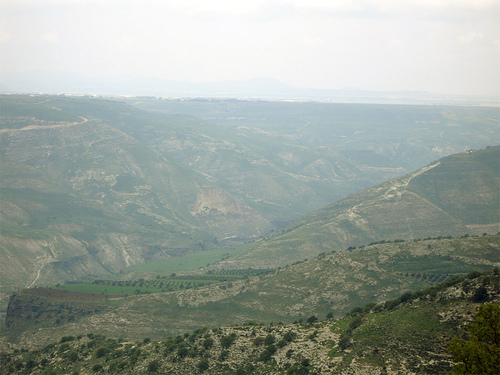|
Red Flag (politics)
In politics, a red flag is predominantly a symbol of left-wing politics, left-wing ideologies, including socialism, communism, anarchism, and the labour movement. The originally empty or plain red flag has been associated with left-wing politics since the French Revolution (1789–1799). The red flag and Red (politics), red as a political colour are the oldest symbols of socialism. Socialists adopted the symbol during the Revolutions of 1848. It was first used as the flag of a new authority by the Lyon Commune and Paris Commune in the aftermath of the Franco-Prussian War (1870–1871). The flag of the Soviet Union, introduced during the Russian Revolution, as well as the flags of many subsequent communist states, were explicitly inspired by the plain red flag. Many socialist and socialist-adjacent political parties, including those of democratic socialism, democratic socialists and social democracy, social democrats, have adapted and adopted a red flag as their symbol. The plai ... [...More Info...] [...Related Items...] OR: [Wikipedia] [Google] [Baidu] |
Madrid May Day375
Madrid ( ; ) is the capital and List of largest cities in Spain, most populous municipality of Spain. It has almost 3.5 million inhabitants and a Madrid metropolitan area, metropolitan area population of approximately 7 million. It is the Largest cities of the European Union by population within city limits, second-largest city in the European Union (EU), and its wikt:monocentric, monocentric Madrid metropolitan area, metropolitan area is the List of metropolitan areas in Europe by population, second-largest in the EU.United Nations Department of Economic and Social AffairWorld Urbanization Prospects (2007 revision), (United Nations, 2008), Table A.12. Data for 2007. The municipality covers geographical area. Madrid lies on the Manzanares (river), River Manzanares in the central part of the Iberian Peninsula at about above mean sea level. The capital city of both Spain and the surrounding Community of Madrid, autonomous community of Madrid (since 1983), it is also th ... [...More Info...] [...Related Items...] OR: [Wikipedia] [Google] [Baidu] |
Social Democracy
Social democracy is a Social philosophy, social, Economic ideology, economic, and political philosophy within socialism that supports Democracy, political and economic democracy and a gradualist, reformist, and democratic approach toward achieving social equality. In modern practice, social democracy has taken the form of predominantly capitalist economies, a robust welfare state, policies promoting social justice, market regulation, and a more Redistribution of income and wealth, equitable distribution of income. Social democracy maintains a commitment to Representative democracy, representative and participatory democracy. Common aims include curbing Social inequality, inequality, eliminating the oppression of Social privilege, underprivileged groups, eradicating poverty, and upholding universally accessible public services such as child care, Universal education, education, elderly care, Universal health care, health care, and workers' compensation. Economically, it support ... [...More Info...] [...Related Items...] OR: [Wikipedia] [Google] [Baidu] |
Amr Ibn Al-As
Amr ibn al-As ibn Wa'il al-Sahmi (664) was an Arab commander and companion of Muhammad who led the Muslim conquest of Egypt and served as its governor in 640–646 and 658–664. The son of a wealthy Qurayshite, Amr embraced Islam in and was assigned important roles in the nascent Muslim community by the Islamic prophet Muhammad. The first caliph Abu Bakr () appointed Amr as a commander of the conquest of Syria. He conquered most of Palestine, to which he was appointed governor, and helped lead the Arabs to decisive victories over the Byzantines at the battles of Ajnadayn and the Yarmuk in 634 and 636. Amr launched the conquest of Egypt on his own initiative in late 639, defeating the Byzantines in a string of victories ending with the surrender of Alexandria in 641 or 642. It was the swiftest of the early Muslim conquests. This was followed by westward advances by Amr as far as Tripoli in present-day Libya. In a treaty signed with the Byzantine governor Cyrus, Amr guar ... [...More Info...] [...Related Items...] OR: [Wikipedia] [Google] [Baidu] |
Islamic Flag
An Islamic flag is the flag representing an Islamic caliphate, religious order, state, civil society, military force or other entity associated with Islam. Islamic flags have a distinct history due to the Islamic prescription on aniconism, making particular colours, inscriptions or symbols such as crescent-and-star popular choices. Since the time of the Islamic prophet Muhammad, flags with certain colours were associated with Islam according to the traditions. Since then, historical caliphates, modern nation states, certain denominations as well as religious movements have adopted flags to symbolize their Islamic identity. Some secular states and ethnic or national movements also use symbols of Islamic origin as markers of heritage and identity. History Early Islam Before the advent of Islam, banners as tools for signaling had already been employed by the pre-Islamic Arab tribes and the Byzantines. Early Muslim armies naturally deployed banners for the same purpose. Early Isl ... [...More Info...] [...Related Items...] OR: [Wikipedia] [Google] [Baidu] |
Emirate
An emirate is a territory ruled by an emir, a title used by monarchs or high officeholders in the Muslim world. From a historical point of view, an emirate is a political-religious unit smaller than a caliphate. It can be considered equivalent to a principality in non-Muslim contexts. Currently in the world, there are two emirates that are independent states (Kuwait and Qatar), one state ruled by an unrecognised emirate (Afghanistan), and a state that consists of a federation of seven emirates (the United Arab Emirates). A great number of previously independent emirates around the world are now part of larger states. Etymology Etymologically, emirate or amirate ( ' plural: ') is the quality, dignity, office, or territorial competence of any emir (prince, commander, governor, etc.). In English, the term is pronounced or in British English and or in American English. Types Monarchies The United Arab Emirates is a federal state that comprises seven federal emirates, each ad ... [...More Info...] [...Related Items...] OR: [Wikipedia] [Google] [Baidu] |
Sheikhdom
A sheikhdom or sheikdom () is a geographical area or a society ruled by a tribal leader known as a sheikh (). Sheikhdoms exist almost exclusively within Arab countries, particularly in the Arabian Peninsula (Arab States of the Persian Gulf), with some notable exceptions throughout history (e.g. the Sangage Sheikhdom). Although some countries are ruled by a sheikh, they are not typically referred to as sheikdoms, but kingdom, emirate, or simply state, and their ruler usually has another royal title such as king or emir. References External links ; Media UseAsia Times {{Islamic state Islamic monarchies ... [...More Info...] [...Related Items...] OR: [Wikipedia] [Google] [Baidu] |
Eastern Arabia
Eastern Arabia () is a region stretched from Basra to Khasab along the Persian Gulf coast and included parts of modern-day Bahrain, Iraq, Kuwait, Oman, Qatar, Saudi Arabia (Eastern Province, Saudi Arabia, Eastern Province), and the United Arab Emirates. The entire coastal strip of Eastern Arabia was known as "Bahrain" for a millennium. Until very recently, the whole of Eastern Arabia, from the Shatt al-Arab to the Hajar Mountains, mountains of Oman, was a place where people moved around, settled and married unconcerned by national borders. The people of Eastern Arabia shared a seamanship, culture based on the sea, as sailor, seafaring peoples. Nowadays, Eastern Arabia is a part of the Arab states of the Persian Gulf. The modern-day states of Bahrain, Iraq, Kuwait, Oman, Qatar, Saudi Arabia, and the United Arab Emirates are the most commonly listed Arab states of the Persian Gulf, Gulf Arab states. Most of Saudi Arabia is not geographically a part of Eastern Arabia. Etymology ... [...More Info...] [...Related Items...] OR: [Wikipedia] [Google] [Baidu] |
No Quarter
No quarter, during War, military conflict or piracy, implies that combatants would not be taken Prisoner of war, prisoner, but executed. Since the Hague Convention of 1899, it is considered a war crime; it is also prohibited in customary international law and by the Rome Statute. Article 23 of the Hague Convention of 1907 states that "it is especially forbidden[...] to declare that no quarter will be given". Etymology The term ''no quarter'' may originate from an order by the commander of a victorious army that they will not quarter (house) captured enemy combatants. Therefore, none can be taken prisoner and all enemy combatants must be killed. A second derivation, given equal prominence in the ''Oxford English Dictionary'' (''OED''), is that quarter (n.17) can mean "Relations with, or conduct towards, another" as in Shakespeare's ''Othello'', Act II, scene iii, line 180, "Friends all[...] In quarter, and in termes, like bride and groome". So "no quarter" may also mean refusal ... [...More Info...] [...Related Items...] OR: [Wikipedia] [Google] [Baidu] |
Bloody Flag
Often called bloody flags or the bloody red (among other names, see ), pattern-free ''red flags'' were the traditional nautical symbol in European waters prior to the invention of flag signal codes to signify an intention to give battle and that ' no quarter would be given', indicating that surrender would not be accepted and all prisoners killed, but also vice versa, meaning that the one flying the flag would fight to the last man (defiance to the death). Such flags were traditionally plain but examples with motifs also existed, such as skull and crossbones on some pirate examples (see Jolly Roger). The origin of bloody flags is unknown, but deep red coloring is strongly associated with the color of blood and thus symbolises suffering and combat. Historical sources mentions bloody flags being used by Normans as early as the 13th century, but red-painted shields were used similarly by seafaring Norse warriors in previous centuries. Since the late 18th century, the bloody fla ... [...More Info...] [...Related Items...] OR: [Wikipedia] [Google] [Baidu] |
Bandiera Rossa
''Bandiera Rossa'' (Italian, 'Red Flag'), often also called ''Avanti Popolo'' after its opening words (also to avoid any confusion with ''Le tre bandiere'', another socialist song), is one of the most famous songs of the Italian labour movement. It glorifies the red flag, symbol of the socialist and communist movements. The text was written by Carlo Tuzzi in 1908; the melody is taken from two Lombard folk songs. Versions Apart from the first Italian text, there are several variants which are identified with certain socialist or communist parties. The last two lines "''Evviva il comunismo e la libertà''" were put in the text after the rise of Benito Mussolini; at the same time the original beginning "''Compagni avanti alla riscossa''" was changed to "''Avanti o popolo, alla riscossa''". Also, the word "''comunismo''" at the end of the chorus is often replaced with "''socialismo''", especially in more recent renderings of the song. Influence on other works Art music ''Bandiera ... [...More Info...] [...Related Items...] OR: [Wikipedia] [Google] [Baidu] |




